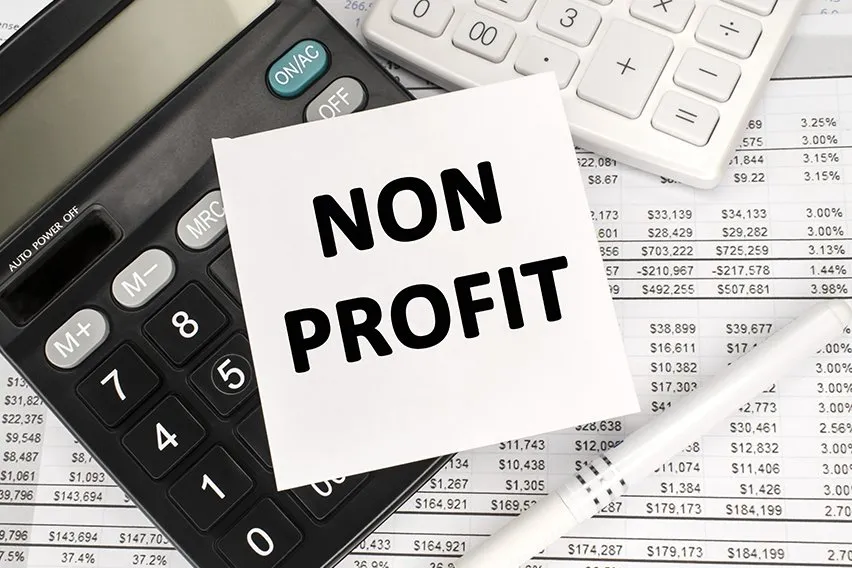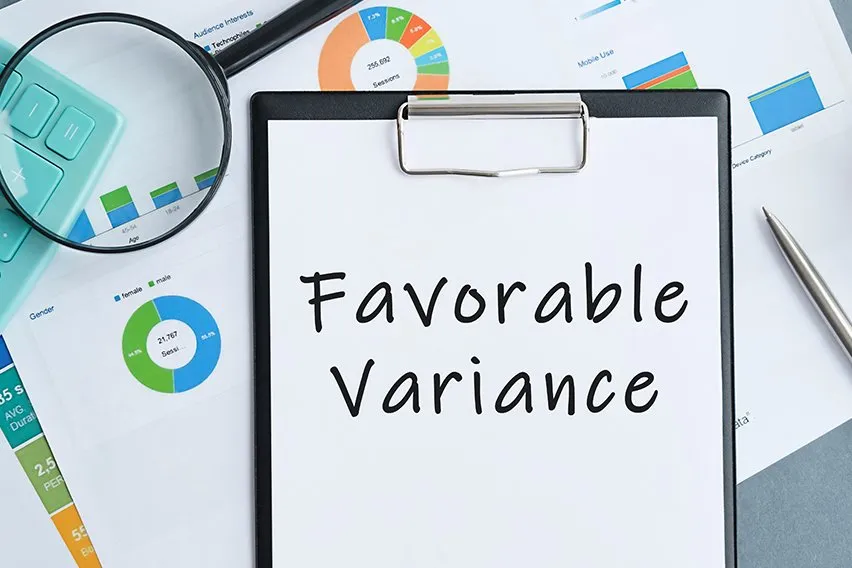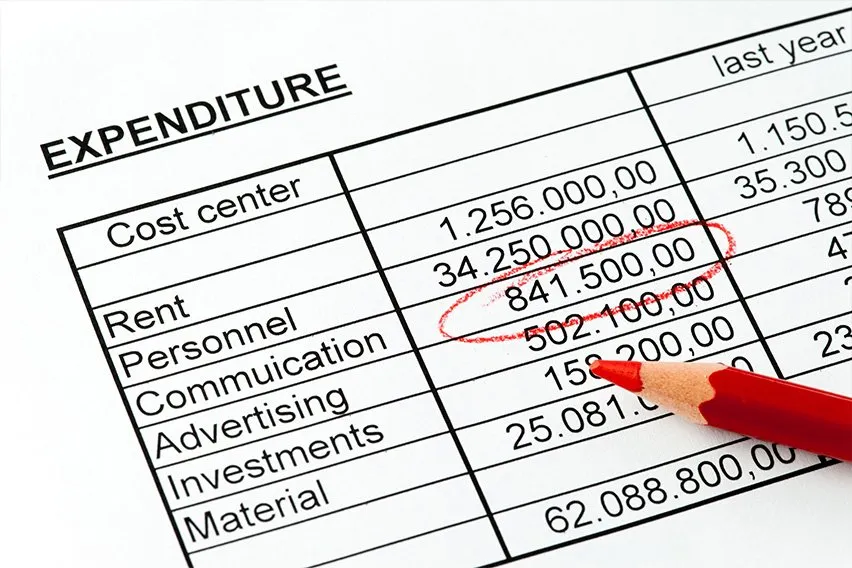Nonprofit Accounting: Basics and Best Practices Guide

Nonprofits are vital organizations that differ from for-profit companies in many ways. Because nonprofits don’t keep the profits they generate, all income goes back into the organization. Nonprofits serve to fill a need of society, rather than to maximize revenue for owners and shareholders.
Because nonprofits are so different from regular businesses, they have unique accounting requirements and best practices. Understanding these guidelines will help your nonprofit succeed in its mission, all while ensuring accountability and tax-exempt status through transparent financial reporting. In this guide, we’ll explain everything you need to know about accounting for nonprofits.
Key Takeaways
- Nonprofit accounting differs from regular, for-profit accounting in several key ways.
- Nonprofits create unique financial statements, such as Statements of Activity and Statements of Financial Position.
- Nonprofits have unique accounting needs and recommended best practices because of the nature of their organization.
- Accounting software can help nonprofits remain in operation, ensure tax compliance, and maintain their tax-exempt status.
Table of Contents:
- What Is Nonprofit Accounting?
- Nonprofit Accounting vs. For-Profit Accounting
- Nonprofit Accounting Essential Elements
- Nonprofit Accounting Statements
- Nonprofit Accounting Compliance Requirements
- Accounting for Nonprofits Best Practices
- Streamlined Nonprofit Accounting
- Frequently Asked Questions
What Is Nonprofit Accounting?
Nonprofit accounting is the process of tracking and managing the finances of a nonprofit organization. The essential elements of nonprofit accounting are quite similar to regular accounting principles for profit-driven businesses. They include revenue and expense records, financial statements, expense tracking, reporting and analysis, and budgeting.
Nonprofit accounting shares much in common with for-profit accounting, but there are some key distinctions that nonprofit entities need to keep in mind.

Nonprofit Accounting vs. For-Profit Accounting
What exactly is the difference between for-profit and nonprofit accounting? Let’s explore how these types of accounting differ from one another.
For-profit businesses generally have the goal of maximizing revenue, keeping overhead costs low, minimizing tax liability, and generating as much net profit as possible for shareholders and owners. They do this by tracking and reporting revenue and expenses. For-profit accounting also considers other revenues and expenses, such as dividends or labor costs.
Nonprofits, on the other hand, have different goals than for-profit businesses. Because no one personally profits from the organization, and because they’re tax-exempt, nonprofit organizations usually focus on minimizing overhead costs to have as much revenue as possible, which they will then funnel back into the organization’s programs and services.
Nonprofit accounting tracks expenses associated with various programs, as well as revenues like donations, event and program proceeds, and grants.
Nonprofit Accounting Essential Elements
Accurate accounting is essential for nonprofits. Not only will it ensure your organization has the resources it needs to achieve its goals, but it will also ensure accountability for your organization, building trust for your nonprofit and ensuring it retains its tax-exempt status. Here are the nonprofit accounting essentials to keep in mind.
Selecting an Accounting Method
When beginning nonprofit accounting, the first decision is whether to use the cash, accrual, or fund accrual accounting method for recording income and expenses.
The cash accounting method records transaction amounts when the money is transferred in or out of the organization. The accrual accounting method records the amounts when the transaction occurs, regardless of when the money is transferred. Many consider the accrual method a more transparent and accurate method of depicting a nonprofit’s financial activity.
The final option is the fund accounting method, a type of accrual accounting method specifically used for nonprofit accounting. This method tracks income and expenses in separate funds to distinguish the sources of your revenues and expenses.
Ensuring GAAP Compliance
Just like for-profit businesses, nonprofit organizations must adhere to the Generally Accepted Accounting Principles (GAAP). These principles are vital for any organization establishing its accounting system, so familiarize yourself with them. In general, you need to ensure your accounting for all expenses and income is accurate and complete.
Budgeting Strategies
Budgeting is key to the success of any organization, but nonprofits have unique budgeting best practices to keep in mind:
- Operating Revenue: Nonprofit operating revenue refers to all income used to fund the organization, including grants, donations, membership fees, and any other revenue sources.
- Program Costs: These are fund allocations for programs or services that your organization facilitates—they include staff training, materials, resources, and other essential program costs.
- Contingency Fund: This is your rainy day fund, a backup plan if your revenues dip. It lets you cover unexpected costs or get through low-income stretches without having to take money from your program funding.
- Fundraising: Fundraisers are an essential money making method for nonprofits, provided the funds raised are more than the costs to put on the fundraiser.
- Expenses: Lastly, you need to consistently allocate funds for ongoing expenses, including salaries, rent, supplies, and other overhead costs.
Managing Overhead Costs
Keeping overhead costs low from the beginning is a great way to demonstrate trustworthiness when you seek financial support. People want to give to causes that will put their donations to good use, so keeping expenses to a minimum will help them decide to support you.
Expenses should be clearly defined, budgeted for, tracked ongoingly, and regularly monitored and reevaluated. Your nonprofit should also take advantage of public and private resources wherever possible to offset overhead costs.
Lastly, ensure accountability by requiring all major expenditures to be approved by your board or another authorized party. Conduct regular internal audits to confirm that expenses are being properly reported.
Delegating Duties
In many cases, it’s recommended to delegate the task of accounting to a professional third party. This helps you in 2 ways: Firstly, it ensures your accounting is held to a professional standard, which will help your nonprofit stay on track with its financial goals. Secondly, it ensures your organization’s accountability and transparency, further building trust and credibility for the nonprofit.
Payroll Management
For your organization to succeed, you’ll need a great team who is happy with their compensation. When it comes to payroll management, your nonprofit should be doing your accounting just like any other business with employees.
Make sure to classify all staff and team members properly (e.g., independent contractors vs. employees), set clear pay rates and communicate them openly, follow all labor standards, report all taxes, and keep detailed payroll records.
Dealing With Taxes
Nonprofits have unique tax requirements that they’ll need to abide by to keep their tax-exempt status. Internal Revenue Code 557 is a good resource that thoroughly breaks down the steps you’ll need to take to ensure your nonprofit maintains its tax-exempt status. This page also describes the tax reporting, filing, and notification rules for nonprofits. Be sure to follow these regulations closely.
Nonprofit Accounting Statements
There are a few required financial statements that are unique to nonprofit accounting. Here are the most important ones to get familiar with.
Nonprofit Budgets
A nonprofit operating budget provides a detailed overview of how a nonprofit plans to spend its money, usually for an upcoming 12-month period. Included in the nonprofit budget is a breakdown of all operating expenses and other costs the organization is expecting to incur.
Nonprofit budgets are usually subject to scrutiny and approval processes. They’ll also be used throughout the year as a way to compare actual income and expenses versus the projections listed in the budget.
Statement of Financial Position
Instead of a “Balance Sheet”, which a for-profit business would be required to generate, a nonprofit would instead issue a “Statement of Financial Position”.
On a Balance Sheet, the formula to calculate assets is:
Assets = Liabilities + Shareholders’ Equity
On a Statement of Financial Position for nonprofits, the formula for assets is:
Assets = Liabilities + Net Assets
The reason for the difference is that non-profit organizations do not have owners, meaning there can’t be shareholders’ equity.
Statement of Activities
A nonprofit’s Statement of Activities is a report generated in place of an Income Statement, which a for-profit business would be required to file. The Statement of Activities shows changes in the value of the nonprofit’s net assets.
For instance, an income statement for a company would show revenue from the sale of goods, and its expenses would show the cost of goods sold. A statement of activities for a non-profit would show revenue from contributions and expenses from fundraising.
At the bottom of the document, a statement of activities would show a “Net Assets” total, while an income statement would list a “Net Income” total instead.
Statement of Functional Expenses
The statement of functional expenses goes more in-depth on the expenses that a nonprofit incurs. This is an optional but very common statement for nonprofit organizations. It separates expenses into 3 different types. These types are usually: Programs and services, management and general, and fundraising, though you may add other categories depending on your specific nonprofit.
Cash Flow Statement
The cash flow statement details how cash flows between various accounts within the nonprofit organization. It accounts for operating activities (cash inflows and outflows from regular operations, such as donations and employee salaries), investing activities (inflow and outflow from investments), and financing activities (inflow and outflow from loan payments and repayments).
Nonprofit Accounting Compliance Requirements
In addition to requirements for filing specific accounting reports, nonprofits must follow additional accounting compliance requirements to keep their tax-exempt status. Here’s what you need to know.
IRS Form 990
Typically, nonprofits are required to file IRS Form 990 annually. This form is required for most tax-exempt organizations that receive more than $200,000 in annual revenue or hold more than $500,000 in assets. If your nonprofit is smaller than this, you can fill out Form 990-EZ.
To complete Form 990, you’ll need to provide information about your organization, its mission, and how it’s achieving its goals. It ensures that your nonprofit is actually acting as it claims to, using your financial statements as evidence.
Another thing to note is that many charity rating organizations will use Form 990 to evaluate the financial health of various nonprofits, so fill it out properly and promptly to ensure your organization remains credible.
State Reporting Requirements
Depending on the location of your nonprofit, you may be required to abide by certain state reporting requirements. Different states have different filing and informational registration requirements, so stay up-to-date on changes to your state’s regulations for nonprofit reporting.
Accounting for Nonprofits Best Practices
Beyond the unique tax forms and special tax requirements, there are some best practices to help your nonprofit grow and achieve its goals. Here are a few nonprofit accounting best practices to consider:
Consider Overhead Expenses Carefully
Your overhead costs will be the number one obstacle to achieving your goals, so you must remain pragmatic about them. Expenses are a necessary part of running a nonprofit, but you need to ensure they remain low or donors will be less likely to support your organization.
It can be difficult to find the middle ground here—expenses need to stay low, but you want to give your organization the opportunity to grow at the same time. When you do have expenditures, make sure they’re well-communicated and can be authentically defended if necessary. When you can’t reduce an expense, be sure to find ways to describe its impact on the organization’s mission.
Keep a Close Eye on the Budget
Your nonprofit should regularly compare your budget to the actual income and expenses throughout the year. Combine historical data, your current budget, and your actuals for the year-to-date to ensure your budget is on track, allowing you to change course as needed throughout the year.
Develop a Long-Term Strategic Plan
Budgets are great tools for the year ahead, but your nonprofit also needs a longer plan that looks to the next 3 to 5 years (or more). Are you planning to scale up the organization in the next few years? What capital costs will you need to account for to make that possible?
Your plan should also include other factors beyond money, such as ways your environmental commitments might change, or how your mission statement might expand in the future.
Regularly Conduct Audits
Nonprofits should regularly conduct audits on themselves to ensure all accounting is up to the standards of both GAAP and the organization itself. The documentation generated by these audits can also have another use, helping you secure grants and funding from state and federal governments. Plus, nonprofits that regularly audit themselves will be considered more credible and trustworthy by potential donors.
Utilize Nonprofit Accounting Software
One of the best ways to ensure your organization’s accounting is held to a high standard is by using software that’s specifically designed for nonprofits. It’s a good idea to make use of nonprofit accounting software, which comes built-in with the features you need to keep your nonprofit’s accounting on track. These features include nonprofit reporting, GAAP compliance, and simplified tax filing for organizations.
Streamlined Nonprofit Accounting
Nonprofit accounting has many unique elements, factors, and requirements that organization executives need to consider to be successful. With a strong grasp of the best practices of nonprofit accounting, your organization’s finances will be better organized, making it easier to achieve your goals.
If you’re looking for a tool that helps you while your nonprofit helps the world, a nonprofit accounting software is perfect for nonprofits, with all the features your organization needs to be well-managed and 100% compliant with nonprofit regulations. Try FreshBooks free today.

FAQs About Nonprofit Accounting
Still curious about the best practices of accounting for nonprofits? Here are a few questions others also ask:
What kind of accounting do nonprofits use?
Nonprofits most commonly use fund accrual accounting, a type of accrual accounting that separates the type of each expense and income in the organization, classifying them into different funds based on the source of each one.
How is nonprofit accounting different?
Nonprofit accounting is different from regular accounting due to using the fund accounting method, having unique, required financial statements (e.g., Statement of Activities), and having special compliance and filing requirements with the IRS (e.g., Form 990).
How do nonprofits record revenue?
Nonprofits record their revenue primarily on their Statement of Activities, which details all the organization’s income and expenses for a given period. This information is also displayed on the nonprofit’s Cash Flow Statement.
What accounting method do most nonprofits use?
Most nonprofits use the fund method of accounting, which separates income and expenses based on their source. For instance, donations would be in a separate income ‘fund’ than government grants when using the fund accounting method.
What do nonprofits struggle with the most?
Nonprofits struggle with minimizing overhead costs above all else. Nonprofits must keep overhead costs to a minimum while also ensuring they provide the organization with the opportunity to grow, so careful, ongoing cost management is a must.
Reviewed by
Kristen Slavin is a CPA with 16 years of experience, specializing in accounting, bookkeeping, and tax services for small businesses. A member of the CPA Association of BC, she also holds a Master’s Degree in Business Administration from Simon Fraser University. In her spare time, Kristen enjoys camping, hiking, and road tripping with her husband and two children. In 2022 Kristen founded K10 Accounting. The firm offers bookkeeping and accounting services for business and personal needs, as well as ERP consulting and audit assistance.
RELATED ARTICLES


 What Is a Favorable Variance? What It Means for Your Small Business.
What Is a Favorable Variance? What It Means for Your Small Business. What Is Burden Cost in Manufacturing and Why You Should Calculate It
What Is Burden Cost in Manufacturing and Why You Should Calculate It Conversion Method: Easy Steps to Convert from Single-Entry to Double-Entry Accounting
Conversion Method: Easy Steps to Convert from Single-Entry to Double-Entry Accounting What Is Accumulated Depreciation?
What Is Accumulated Depreciation? A Simple Guide to Small Business Write Offs
A Simple Guide to Small Business Write Offs How to Become a Small Business Owner in 7 Steps
How to Become a Small Business Owner in 7 Steps